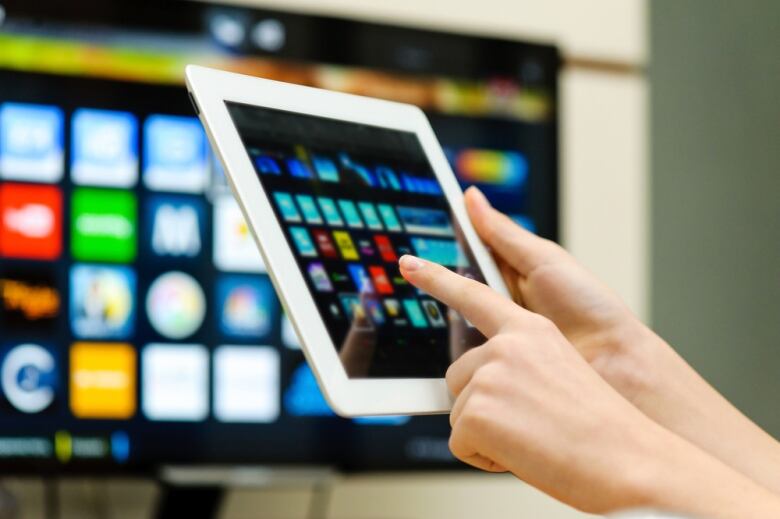Netflix, Spotify and more? It might be time to 'Marie Kondo' your digital subscriptions
If you're ready for spring cleaning, dump services that are no longer useful

From Netflix to Dropbox to Spotify, there's an increasing number of digital services out there, vying for our dollars and enticing us with fresh content and new tools.
But with the unprecedented convenience of those on-demand services, it can be easy to end up with more subscriptions than we really need, useor can afford.
And that means, in the words of the infamous tidy-upper Marie Kondo, faced with relentless "subscription creep," it's time to get rid of the (digital) clutter that no longer brings us joy.
Ever wonder why there are so many subscription services? Seemingly anything you might oncehave thought of buying, you can now subscribe to.
Indeed, there are really just a few dominant business models that have emerged out of Silicon Valley: There are services that are entirely ad-driven, which means they are free to users. But as recent history has proven, there's always a catch, and when it comes to online services, when something is free, it means you are the product. And thus, we've ended up with massive corporations that trade in our data.
On the other side of the spectrum are products or services that we pay foroutright. And right in the middle, profiting offboth approaches, sits the premium subscription business.

Often these offerings feature a basic service that is free. Maybe it doesn't have all of the features, or it might be riddled with ads, or, it might just be free for a trial period. And if you want the extended offerings, you pay for the premium subscription.
"Companies are looking for new ways to monetize. For example, Apple has noticed hardware sales drop over the past few years. And in fact, the ability for them to innovate on the hardware front is getting more and more difficult," says Jaigris Hodson, an associate professor at Royal Roads University, whose research specializes in understanding how people interact with digital technologies.
Nonetheless, she wonders, "will this be successful in the longer term? I think we may end up seeing subscription fatigue when consumers end up with high monthly bills and don't feel a big enough return is there for them."
And this has shifted the entire ecosystem. According to Gartner Research, "by 2020, all new entrants and 80 per centof historical vendors will offer subscription-based business models."
To that end, there are few industries that aren't trying to make a go of this model. For deep-pocketed jet setters, Surf Air, the "Netflix of Aviation," offers members limitless access to flights for a monthly fee.
But while consumers are tempted by the admittedly addictive convenience of subscription services, the downside is, it's easy to end up with more than we might even need, or really use.

In a sense, it's ironic, given that people don't actually like to pay for things online. It's a harsh reality that newspapers and magazines have all struggled with: when something is on the internet, people assume it should be free.
But now, marketing masterminds have come full circle, offering us even better versions of all those things we get freeonline. Teams of designers spend their daysworking in the background thinking, "How can we get people to upgrade?"
In order to get you to pay, those designers need to convince you that there is something that you couldn't get otherwise. And whether that means an ad-free viewing experience on YouTube, or being able to select a specific song on Spotify, the strategy seems to be working.
Multipleoverlapping subscriptions
Where this new model gets tricky (and potentially expensive) for consumers is that people end up with a lot of redundancies, especially, notes Hodson, the pile of subscription streaming services. The need for multiple overlapping subscriptions is enough to make you long for the old days of cable bundles.
Now, shows are only available on specific platforms. That means, if you want to watch Season 8 of Game of Thrones, you'll need to subscribe to a particular service, because it's not on Netflix (which you're probably already subscribed to). Oh, and if you're a sports fan, you're still paying for cable, too.

Hodson says, "We might be paying in excess of $100 per month just to access all the shows we want to see from all of the different platforms."
And it's not just streaming television platforms that are prone to redundancies. It's not uncommon for someone to subscribe to Apple Music and Spotify, or to Dropbox and iCloud, because of the on-demandnature of their offerings and the ease with which proprietary apps work on specific devices. For example, maybe you've been using Dropbox for years to back up your files, but then Apple prompts you to upgrade iCloud when your iPhone storage gets low.
So if you're feeling like it's time for a little spring cleaning, the best place to start is with the subscriptions that are no longer useful to you. Hodson recommends people "do an app cleanse once every few months," in order to see which services they can live without.
So, start with an audit. Scan through your credit card statements to see whatyou've actually subscribed to, because while you'll likely remember the apps you actively use, like Apple Music and Netflix, others, like iCloud, which operate in the background, might be less visible.
Once you have a good idea of everything you're subscribed to, then you can start making decisions about where you can consolidate, and what you want to just cancel altogether.
It may sound like a painstaking task for a rainy Sunday, but it turns out, the one thing that isn't convenient about subscription modelsis opting out.












_(720p).jpg)


 OFFICIAL HD MUSIC VIDEO.jpg)
.jpg)



























































































